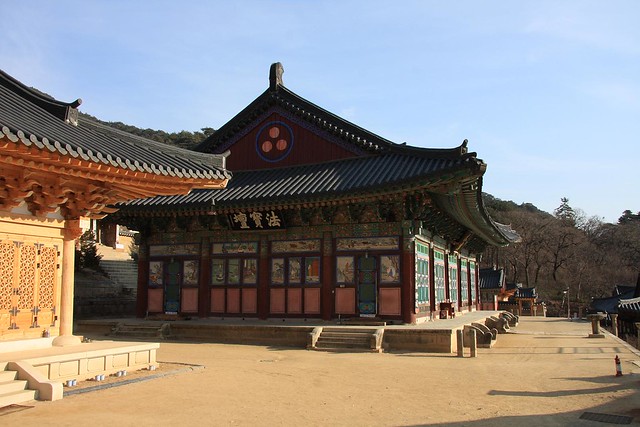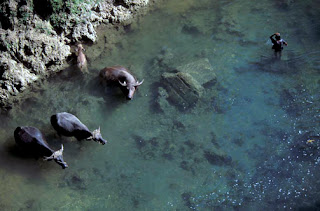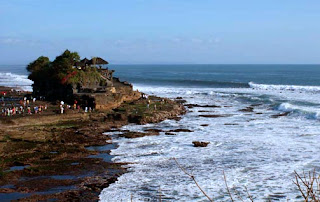Text and Photos by Teguh Sudarisman
There's no such thing as a bad day to visit Bromo. Even when it's cloudy and raining, it displays another side of its beauty.

"When the weather is clear, the view here is magnificent," says Purnawan, a lecturer and researcher on the Tengger community, who is accompanying us to Ngadas.
Our destination is Segara Wedi Anakan – the upper "sea of sand" – located to the south of and–next to Bromo's crater. Until recently, most people only knew about the sea of sand below Mount Bromo. Ngadas (2,140 meters above sea level), the highest inhabited village in Java and located within Bromo-Tengger-Semeru National Park, is our base camp.
This very morning, we canceled our plan to see the sunrise over Bromo from the south, because of the relentless rain and fog. Our plan to find Segara Wedi Anakan also seems rather uncertain. And the weather has been like this for ten days now. Some of the villagers on the west slope of the Tengger Range have resumed their activities, but most are wrapped in sarongs and shivering with cold – which seems odd to me, since they've lived here for generations.
Someone suggests that we pay a visit to Pak Ngatrulin, the dukun (traditional leader) of Desa Ngadas. "Why not request help from Pak Untung, the local pawang hujan (rain control expert)?" he advised us. When we ask Pak Mulyadi, former village head of Ngadas, park ranger, and the owner of the house where we are staying, he takes us there.
Pak Untung is sleeping when we arrive. He grumbles when his wife awakens him. "If you need help now, why didn't you tell me yesterday?" He's a big guy, with a fierce face and hair, rather intimidating; we say nothing. But he doesn't seem angry. He brings out his cigarettes and squats out in the front yard; we see his mouth uttering a mantra, and his eyes staring far off into the sky. The ritual ends after about five minutes.
He doesn't object when Pak Mulyadi asks him to bring out his "pets" – masks of a tiger, white leopard, cow, white ape, and buffalo, and a–kuda lumping (flat horse image) and its whip. Pak Untung is a pawang of Bantengan, a traditional Tenggerese art form. He tells us that each mask has a penunggu (inhabiting spirit) which needs to be regularly fed with incense and various offerings, so that whoever wears it is not possessed.

As soon as we set out down the hill, the weather clears; the grassy plains in the valley between Gunung Kursi and Gunung Jantur start to show green, and the small hills below, often called the "Teletubbies", are bathed in golden sunlight. We can clearly see the concrete road through the fields, which later becomes a dirt road heading toward the lower sand dunes. "Hmm, it seems Pak Untung does have the power," Arif chuckles.
Though the summit of Mount Jantur is still blanketed with fog, the landscape here is truly extraordinary. The mountain is composed of vertical layers of stone. In contrast, Mount Kursi, with its long, flat summit, is covered with knee-high elephant grass and ferns, fennel plants with yellow flowers, purple-flowered trasinan, and occasionally tiny edelweiss.
"Why don't we just climb Gunung Kursi? Isn't Segara Wedi Anakan behind this mountain?" I ask. Pak Puliono shakes his head.""The route from here is too far and too steep, and on the other side of this mountain, we'd have to climb another. It's much easier to take the Bromo stairs." I look again at my Google Earth printout of Bromo, and he's right.
The four-wheel-drive Jeep driven by Pak Mulyadi cuts through the grassy fields, follows a sandy road with the odd rain puddle, and finally comes to a plain entirely covered in sand; the lower sea of sand. We see Bromo emitting white, sulfurous smoke to our left, and the hills below it covered in a silvery color – ash from the recent eruption.
The weather turns overcast again, and fog and sulfurous fumes from the crater greet us when we arrive at the bottom of the natural stairway to the peak of Bromo (elev. 2,229 meters).
We're all coughing; we cover our mouths with handkerchiefs, which unfortunately don't help much, because if you breathe through your mouth, the fumes still get in and make you cough. We climb the stairs – it is said there are 249 of them – and we see who we have left behind: Purnawan. Although he regularly visits Tengger for research, it seems breathing sulfur fumes is a new experience for him.
When we get to the top of the stairway at the rim of the crater, we take the route to the left. "You can also turn right, but the terrain is more difficult," says Puliono, now 53, who has been exploring Tengger since he was 17.

After walking only about 50 meters, I stop suddenly. The fence along our right has just ended, and the completely fenceless path ahead of me vanishes in the fog. So should I keep going or not? There's also a strong wind from the right. I wait and shout "woooii" several times. I hear a reply from behind me, and then they emerge from the mists. We can faintly see Pak Puliono in the distance, carrying our supplies on a pole across his shoulders.
So we continue walking slowly along the crater rim. Breathing becomes more difficult, as we're climbing a small hill and the sulfur fumes are still bothering us. The wind and fog bring an occasional drizzle, and we have to keep shouting to each other whenever we get separated in the thick fog. Despite my anxiety, I think how great is God, who created this Tengger caldera. Probably if the weather were clear, we would get a much nicer view from here. But even in these foggy conditions, the seemingly endless trail, the crater, and the ravine cloaked in silver present a stunning panorama. '"It feels like we're walking on top of the Great Wall of China," says Arif.
Then the wind helps us; the smell of the sulfur fumes suddenly vanishes, as does the thick fog covering the trail. On our right stretches the vast crater of Bromo, with many fissures emitting white sulfurous smoke.
We climb again, stopping frequently to drink and catch our breath. Purnawan, holding his knees, groans, "Is it much farther?" Pak Puliono, who hasn't even taken a sip of water the whole time, simply smiles. "It's close, just one more hill."
Well, what's "close" for him is far for us, and this last hill is the highest yet. We get split up, and Purnawan falls behind. Puliono is calmly squatting at the summit, watching us climb up one by one. "Come on, this is the last safe spot!" he shouts from above.
"After that?" Arif asks.
"Not safe any more. Hahaha!"

We're flabbergasted. Going down shouldn't be too bad, but coming up again? And with this rain and fog, will we even be able to see the sea of sand?
The rain and wind get stronger, and we decide that this is far enough. "At least we now know the way to the upper sea of sand," Purnawan says to console me. And we have to proceed very carefully on our walk back down, with the rain beating on our backs.
From Ngadas, we enter the Bromo area from the south. From Ngadas, you can also head toward Ranupani, the gateway for climbing Gunung Semeru from the north. The road to Ngadas and Bromo is poured concrete, and requires a four-wheel-drive vehicle with an experienced driver. It's recommended to get a local Tengger resident to drive, or try to find a driver in Tumpang. Contact Purnawan (0341-5406678, purnawan_dn@yahoo.co.id) or Mulyadi Bromo Putro (0341-9731001).
Garuda flies to Surabaya 108 times a week.
Source: Garuda Indonesia Magazine






 Entering the wildlife reserve, I was greeted by birds calling to one another from the mangrove and pedada trees. They seemed to be welcoming our arrival with the sounds of nature. It was all so peaceful and pleasant.
Entering the wildlife reserve, I was greeted by birds calling to one another from the mangrove and pedada trees. They seemed to be welcoming our arrival with the sounds of nature. It was all so peaceful and pleasant. 









 If you like to observe wild animals like tigers, lions and crocodiles in their native habitat, then Taman Safari Indonesia is just for you.
If you like to observe wild animals like tigers, lions and crocodiles in their native habitat, then Taman Safari Indonesia is just for you.  Taman Safari has a collection of animals from nearly all over the world and local animals such as komodos, rhinoceros, bisons, sun bears, white tigers, elephants, anoa, etc. There are more than 2,500 animals in Taman Safari Bogor with hundreds of species currently being maintained.
Taman Safari has a collection of animals from nearly all over the world and local animals such as komodos, rhinoceros, bisons, sun bears, white tigers, elephants, anoa, etc. There are more than 2,500 animals in Taman Safari Bogor with hundreds of species currently being maintained. After watching animals in their habitats, you can take your children to enjoy various animal attractions performed by orangutangs, dogs and even goats. These attractions take about half an hour. You could also visit the bird park, animal education show, reptiles, baby zoo, elephant and horse riding, safari trek, and wild-wild west exhibits.
After watching animals in their habitats, you can take your children to enjoy various animal attractions performed by orangutangs, dogs and even goats. These attractions take about half an hour. You could also visit the bird park, animal education show, reptiles, baby zoo, elephant and horse riding, safari trek, and wild-wild west exhibits.


























